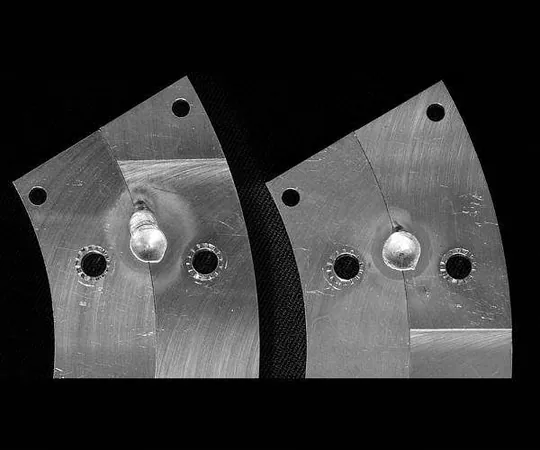
Revolutionizing Space Construction: The Future of Lunar Welding Technology
2025-04-13
Author: Nur
Engineering a New Era in Lunar Infrastructure
As humanity sets its sights on establishing a permanent presence on the Moon and Mars, groundbreaking innovations in construction techniques are becoming essential. At the heart of this progress is Dr. Wei Li from The University of Texas at Dallas, who is pioneering a virtual welding platform designed to tackle the unique challenges of building in low-gravity environments.
NASA-Funded Research Breakthroughs
Dr. Li, an assistant professor of mechanical engineering, is leading an ambitious project, funded by NASA with a generous grant of up to $750,000. His mission? To solve one of the most complex problems facing extraterrestrial infrastructure: welding under the extreme conditions of the lunar landscape.
"Safety is paramount as we prepare to return to the Moon and journey to Mars," emphasizes Dr. Edward White, a prominent figure in mechanical engineering at the university. "Being within Earth's orbit offers a sense of security for quick repairs. Dr. Li’s research is crucial in making space travel safer and ensuring mission success."
Conquering the Moon’s Unique Challenges
Dr. Li highlights the formidable hurdles faced by astronauts on the Moon: "The lunar atmosphere is incredibly thin, leading to drastic temperature fluctuations, ranging from a bone-chilling -387°F to a scorching 260°F. Coupled with an extreme vacuum and only one-sixth of Earth’s gravity, these factors make traditional welding methods unreliable and risk creating defects in metal structures."
Mastering welding in space is not just a technical challenge; it's vital for NASA's ambition to build sustainable bases and habitats on the Moon and beyond.
Innovative Solutions for Lunar Construction
Establishing machine shops on the Moon for metal fabrication akin to Earth operations is impractical. However, Dr. Li envisions a solution: sending metal components from Earth to the Moon, then utilizing advanced welding technology to assemble them into necessary structures for human settlement.
In his laboratory, Dr. Li's team is simulating diverse welding techniques suited for lunar-like conditions, including electrical arc, laser, and electron-beam welding. They also explore nonmetallic materials through 3D printing, pushing the boundaries of what's possible in space construction.
Collaboration and Future Prospects
Through the Comprehensive Advanced Manufacturing Lab, Dr. Li and his collaborators aim to recreate lunar conditions and validate their models with both experimental data and insights from past space missions like Skylab.
Once perfected, this innovative platform could significantly influence not only lunar projects but also future missions to Mars and the International Space Station, propelling humanity toward a new frontier in space manufacturing and construction.


 Brasil (PT)
Brasil (PT)
 Canada (EN)
Canada (EN)
 Chile (ES)
Chile (ES)
 Česko (CS)
Česko (CS)
 대한민국 (KO)
대한민국 (KO)
 España (ES)
España (ES)
 France (FR)
France (FR)
 Hong Kong (EN)
Hong Kong (EN)
 Italia (IT)
Italia (IT)
 日本 (JA)
日本 (JA)
 Magyarország (HU)
Magyarország (HU)
 Norge (NO)
Norge (NO)
 Polska (PL)
Polska (PL)
 Schweiz (DE)
Schweiz (DE)
 Singapore (EN)
Singapore (EN)
 Sverige (SV)
Sverige (SV)
 Suomi (FI)
Suomi (FI)
 Türkiye (TR)
Türkiye (TR)
 الإمارات العربية المتحدة (AR)
الإمارات العربية المتحدة (AR)